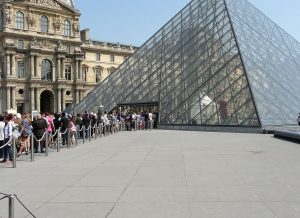Reilly Turner- Architecture: Individualism and Collectivism
Preface:
Hello, my name is Reilly Turner, and this portfolio is titled Architecture: Tying Individualism and Collectivism. The licensing for this portfolio is CC BY 4.O.
Introduction:
The focus of this portfolio is giving a greater understanding of how architecture is an art form that showcases original ideas and imaginations that allow one to stand out from the rest. In doing so, the artist can create a unique experience that draws people together to communicate and collaborate as a community. This newfound communication is what defines cultures found all over the world.
Themes:
The first theme that I will be focusing on within this portfolio is individualism. Architecture is a form of art that allows an artist to think outside of the box and create something unlike anything before. In many cases, ideas that dwell outside standard practices are usually scrutinized before they are given a fair chance to be appreciated. The second theme that will be discussed is collectivism. Eventually, architecture that was once scrutinized is now idolized and cherished by many, thus defining their culture. This process is seen all over the world.
Analysis:
The three images I have chosen below to show the connection between individualism and collectivism in architecture through a step by step process.
Image #1

This first image shows the Louvre Pyramid which serves as the entrance to the Louvre Museum. In 1984, I. M. Pei, a Chinese-American architect was commissioned by then President of France, Francois Mitterrand, to construct an entrance to the Louvre Museum that would allow for an effective way to disperse the large amount of visitors that the original entrance could no longer handle. Pei was able to create an underground system that would successfully circulate the visitors throughout the museum. The glass and metal pyramid would serve as the main entrance and upon entering, you would be directed to an underground reception where you would find a system of public spaces to view all the art displayed.
Pei’s ideas and visions were unlike anything seen before in France and deeply resonate with the theme of individualism within architecture.
Image #2:

The second image shows the Louvre Pyramid once again, but this time people can be seen outside. I chose this image because I believe that is shows the second part of the connection between individualism and collectivism.
With finding success, Pei also found scrutiny from the French people. They believed that the enormous glass and metal pyramid was an eyesore to the historic French Renaissance style of the Louvre Museum. At one point it was believed that ninety percent of the French Public was against Pei’s architectural ideas. However, upon opening to the public, an experience like no other was created.
Image #3:

Shortly after the reopening of the newly remodeled Louvre Museum, it quickly became one of the most idolized sites within the city. Today, Pei’s creation competes with the Eiffel tower in defining the landscape of Paris. The Louvre Pyramid continues to play a vital role in defining the Parisian culture and brings together thousands both locally and globally each day.
I chose this final image because it showed Paris collectively, which was the second theme to be discussed within this portfolio.
Application:
The Louvre Pyramid is one of many examples of how architecture is a form of art that promotes both individualism and collectivism. I believe that the story behind this famous landmark successfully captures and connects both themes discussed in the portfolio. Architecture can reach cultures all around the world as well as bring many together. Like most art forms, I think that the connection that was made between an individual and the community can similarly be experienced in everyday life. I believe that these deep connections are the foundation as to why art resonates with so many.

